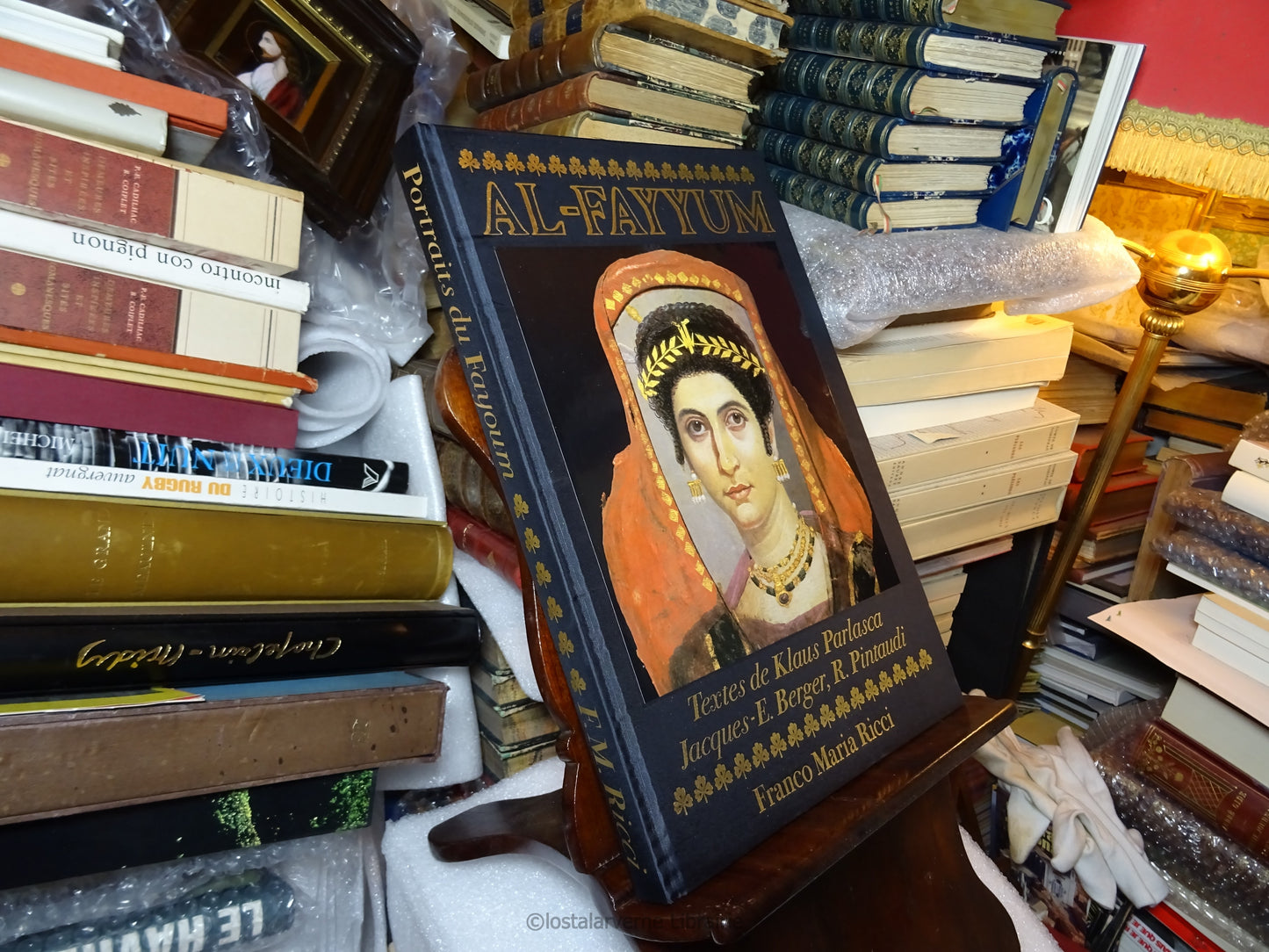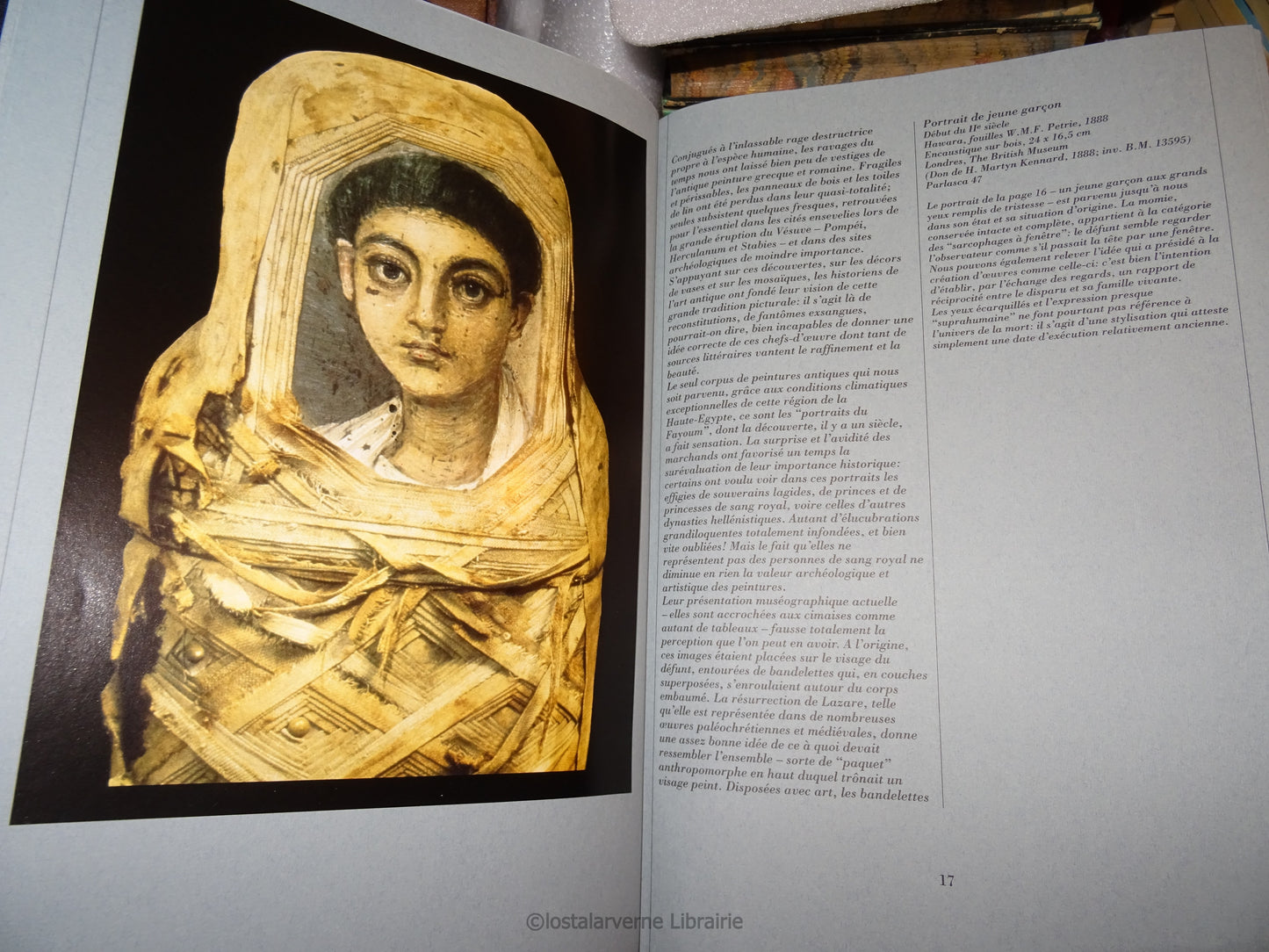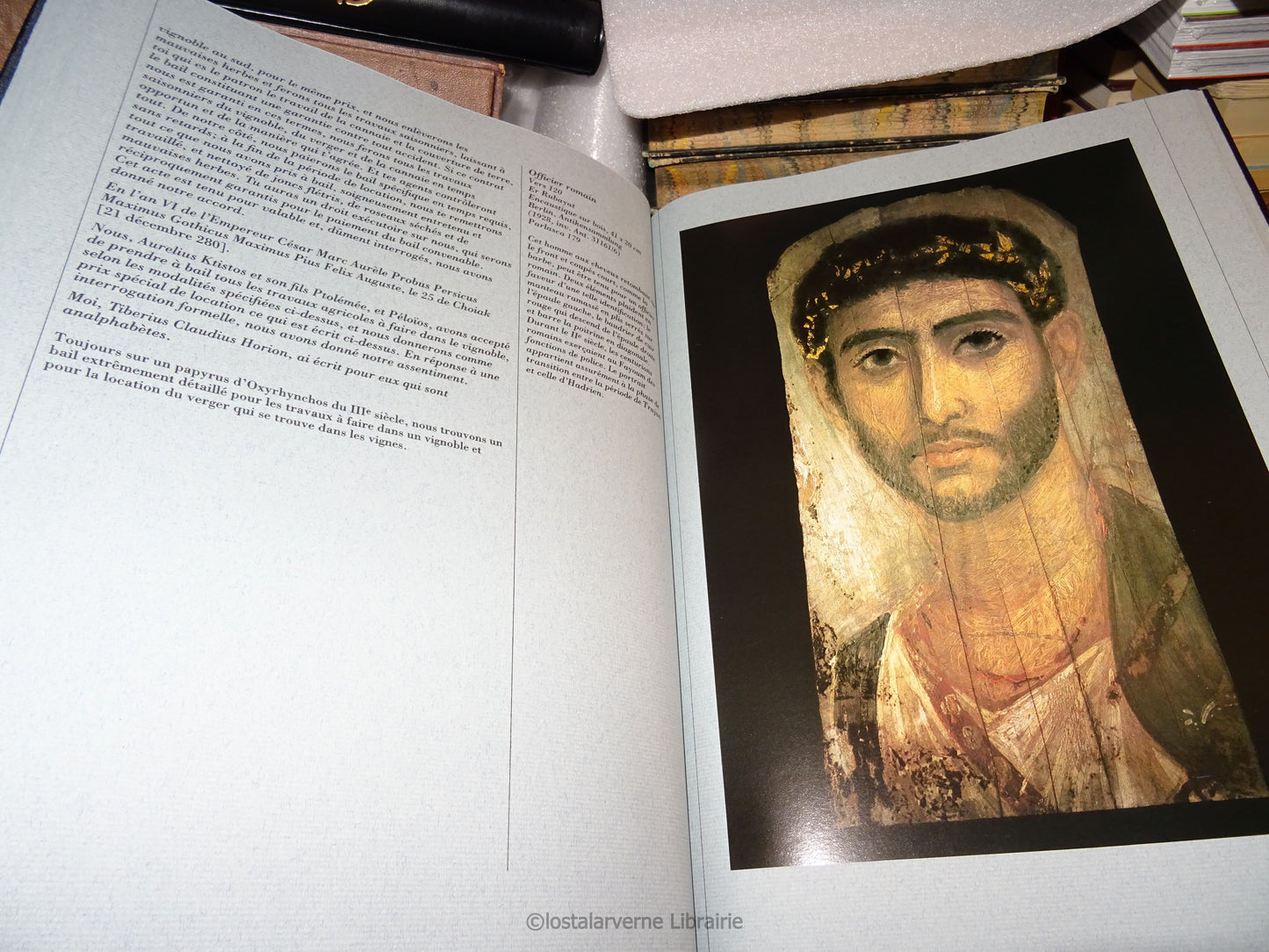Librairie L'Ostal Arverne
Al-Fayyum - Egypt - Portraits - Mummies - Editions FMR 1995 1/500
Al-Fayyum - Egypt - Portraits - Mummies - Editions FMR 1995 1/500
Couldn't load pickup availability
Description (ph6)
- Superb work of art and scholarship
Winner of the art book prize at the 1996 book fair
Quite rare to find in French
- This volume presents a selection of portraits of mummies found in the oasis of Fayoum
in Egypt and dating from Roman times. The realism of the faces and the quality of the pigments and the manufacturing
make it one of the most important examples of early painting.
- The "Fayoum portraits" are a collection of paintings dating back to Roman Egypt executed from the 1st century
from the end of the reign of the Roman Emperor Tiberius until the 4th century. These are painted funerary portraits inserted into the bands at the face of the mummy.
The deceased is represented there in bust, the face of the face. The discoveries were numerous in the 19th century (collections of Henry Salt and Theodor Graf), but the first excavations did not take place until 1888 in Hawara, under the direction of the British archaeologist Flinders Petrie.
Although they seem to stand out in their naturalism, these “Fayoum portraits” continue the funerary tradition of ancient Egypt, enriched by foreign influences linked to invasions and immigration, Greek and then Roman in particular. Their technique varies, as does the quality of their realization.
- Function of "Fayoum portraits"
The “Fayoum portraits” therefore did not have the mummy facing as their only function.
They have a commemorative function. Usually, this function is mainly performed by statuary, as evidenced by the Roman tradition of portraits. It is not improbable that they were carried in procession during the burial, like the ancestor portraits of the Roman era when a family member died.
The funerary function of the “Fayoum portraits” was enriched in Roman times by the search for resemblance of features inherited from Roman culture. The presence of the image of the deceased, idealized or not, directly linked to the body of the deceased already knows precedents continuously throughout the Pharaonic era. The deceased must indeed survive physically and spiritually, and his body serves as a physical attachment to the immaterial parts that compose him (ka and ba).
https://www.lejournaldesarts.fr/medias/les-laureats-du-prix-du-livre-dart-au-salon-du-livre-1996-100849
https://fabriano.com/en/history/
https://www.nationalgeographic.fr/histoire/decouvrez-les-portraits-du-fayoum-lart-funeraire-egyptien-au-realisme-epoustouflant
First printing of 500 numbered copies
Introduction and notes by Klaus Parlasca
Texts by Jacques-Edouard Berger and Rosario Pintaudi
Format 24*35cm, 168p
numbered 260/500
The handmade paper was specially made
in the round shape at the Pietro Miliani mill in Fabriano
Embellished with 62 magnificent color plates
The Photogravure is due to Bassoli Olivieri
Superb publisher's binding in black silk
in sturdy cardboard box
studded with stylized 3-branch Parma violets
State
Very nice work with minimal wear and tear
- slight rubbing on case
- minimal marks on the 2nd dish
- Fresh interior
- a slightly dog-eared page




















Share







